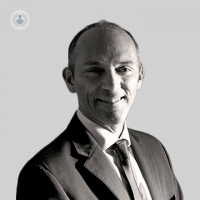Vagus Nerve Stimulation
Written in association with:Vagus Nerve Stimulation (VNS) is a treatment to help children above the age of four and adults to control their epilepsy. It’s a type of neuromodulation and is very beneficial for patients when medications to stop seizures have failed. It can also help treat depression, especially when counselling and other treatments have not worked.
Mr Richard Selway tells us more about what happens before, during and after vagus nerve stimulation.

What happens during vagus nerve stimulation?
Two incisions are made, one in either the chest or the armpit and one on the left side of the neck. The vagus neurostimulator is implanted into the left side of the chest with a wire is guided under the skin from the chest and attached to the left vagus nerve. The vagus nerve runs from the brainstem to the abdomen.
The stimulator uses pulses of electricity to send signals to the brain to alter the activity. The regular pulses of electricity can help people who are not aware that they are about to have a seizure. This treatment only works for seizures related to epilepsy. There are different types of VNS models but your surgeon will choose the one that’s best for you.
Before the procedure
Your surgeon will talk to you about the associated risks of the procedure and go through the steps of the operation with you. You’ll be told what medications you need to stop before the surgery and when to fast.
What risks are there with VNS?
As with any surgery, there are always risks involved. Some common risks associated with VNS include:
- Infection
- Difficulty swallowing
- Pain around the incision
- Loss of speech
Side effects of the treatment might include:
- Hoarseness or voice changes
- Headaches
- Sleep apnoea or insomnia
- Shortness of breath
- Difficulty swallowing
- Throat pain
- Tingling of the skin
Some people experience no side effects at all, but those that do should experience an improvement in these side effects over time. However, if side effects are affecting your day to day life, then you should seek medical advice.
After the surgery
You will have a follow-up consultation where your doctor will turn on the VNS and test what frequency is right for you. You will have set on and off cycles of electrical pulses tailored to you. There’s also a handheld magnet for people who can feel that seizures are about to happen or know their triggers, so they can initiate the stimulation themselves. The magnet can also turn the VNS off if required.
If you or a loved one is interested in knowing more about VNS for epilepsy, contact Mr Richard Selway for more information.


